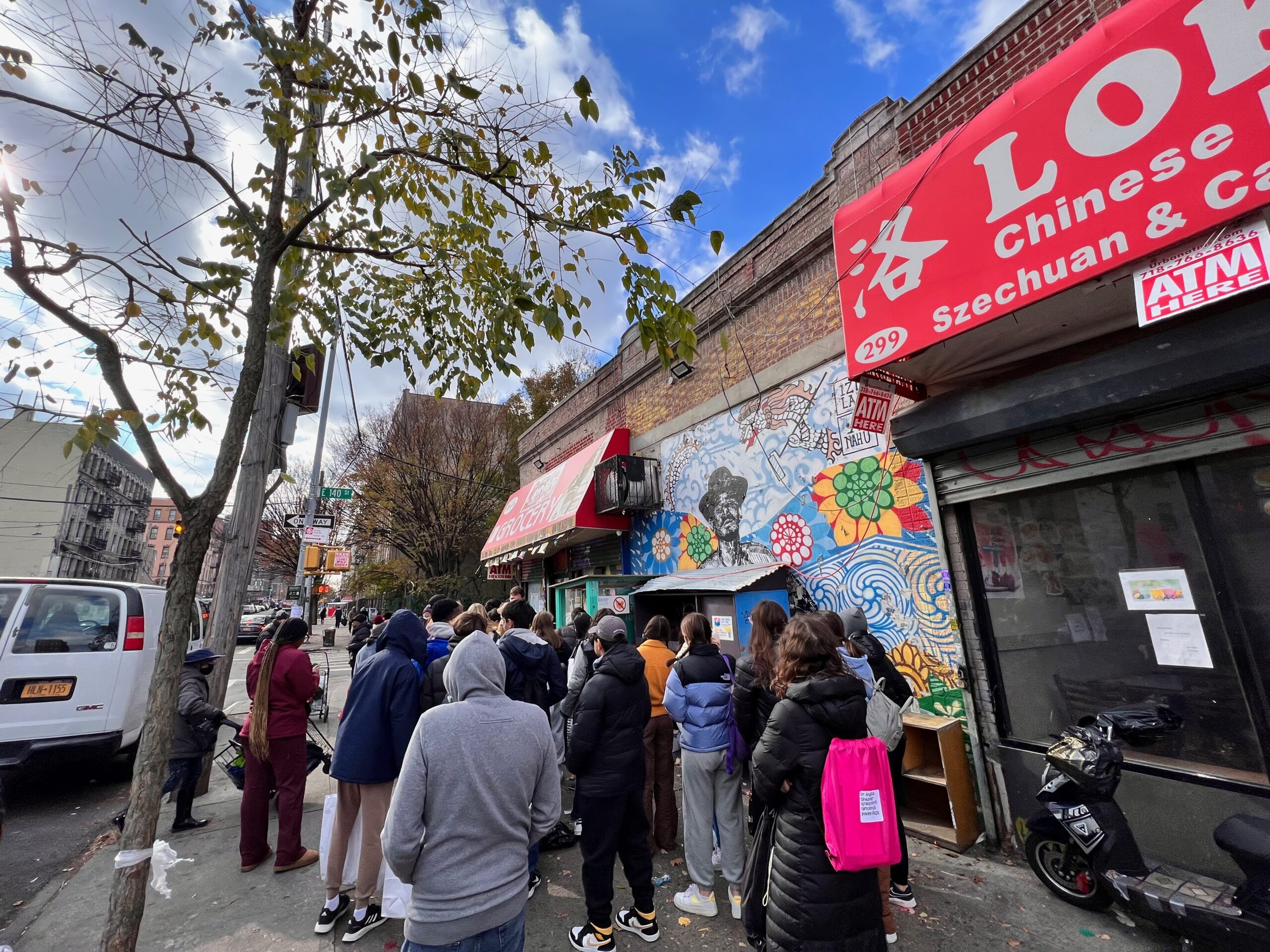It started in 2020 with one food-packed fridge on East 141st Street.
Grassroots Grocery is now a model for how food insecurity and food waste might be addressed even beyond New York’s borders.
During the pandemic, the one fridge in the city’s hungriest borough grew to three, with weekly deliveries to food banks. In September, the effort expanded. Mott Haven Fridge rebranded to Grassroots Grocery and added a fourth fridge in Manhattan and weekly food deliveries to food pantries and families.
Two months into its new identity, Grassroots Grocery is enlisting more than 1,000 volunteers to deliver and distribute donated food throughout the South Bronx and Manhattan, according to Daniel Zauderer, its founder and executive director.
Neighborhood nonprofits like Gotham Food Pantry and Central Synagogue, churches, mosques and community centers, have provided the manpower to hand out food provided by Grassroots Grocery to their neighbors in need, with no questions asked, no documentation needed. Large supermarkets and fast food franchises are now supplying much of the food.
Noemi Alamo is one of the volunteers. A 64-year-old woman, she has spent her entire life in the Bronx. When Mott Haven Fridge opened in 2020, she started by cleaning and arranging donated food in the fridge and pantries. Now she brings food left over from the program to the Mill Brook Community Center at least three times a week.
“There is a great need,” she says. “When I bring fruits and hot food, I have to ask them to step back so I can fill it up” and distribute equally.
Dozens more participate in a Saturday project involving 30 drivers who deliver food to housing developments and a medical clinic, to serve an estimated 1,000 families in Harlem and the Bronx.
Sonia Taylor, 65, has lived all her life in the Bronx, and oversees the original sidewalk fridge on 140th Street, where on any day one might find a line snaking down the block waiting for supplies to be replenished.
“I decided to do it because I walked a lot and passed by and saw elderly people, mothers with children and homeless people coming and the fridge was empty,” she said.
Taylor, who ran to be a Democratic leader in the Bronx and lost, but still serves as a community leader, is now serving at the second fridge, on Brook Avenue, where she manages donations and access.
“Now I see smiles because we make sure that everyone gets something without anyone pushing them aside,” she reported.
By joining forces with private entities and community leaders, the nonprofit in recent months has distributed more than 550,000 pounds of food, Zauderer said. But, he noted, the effort still seems insufficient, since the Bronx is one of the places in the United States with the highest rates of hunger or lack of access to food.
One in five Bronx residents goes hungry, according to Feeding America. In 2020, 19.7% of its residents faced this problem, double the average in the rest of the city. Given borough demographics, most hungry families are Black or Brown.
Hunger doesn’t end at the Bronx’s border. Food insecurity is a global epidemic: The United Nations estimates in a recent report that between 702 million and 828 million people are affected. U.S. Department of Agriculture numbers show that 10.2% of households have problems obtaining food on a daily basis, which means about 34 million people, 9 million of whom are children.
A growing awareness of hunger and poverty across the city has drawn more and more volunteers who feel like Loretta Bottoms that everyone must work to eradicate hunger in their communities.
Bottoms collects food and vegetables to donate.
“I like helping others, there are a lot of people in need,” she says, noting surprise at the numbers of people in need. “Unfortunately, our lines are getting longer and longer, every weekend. This means that there are people who know about our work, but also that there are many people who still need help.’
Grassroots Grocery is one of many organizations working to mitigate hunger in the South Bronx and across the country. Nationwide, many other organizations, such as Feeding America, City Harvest, Food Bank for NYC, have donated or rescued billions of pounds of food in the past few years. The federal government has also stepped in, hosting a conference on hunger in September that drew pledges of more than $8 billion from private sources to feed the hungry.
There are some detractors to these initiatives. In an article published by The Guardian, Raj Patel, author of Stuffed and Starved, believes that “food philanthropy is focused on mitigating rather than ending hunger, because it is connected to capitalism at the hip… So much money can be made in food aid through tax breaks, free advertising, salaried executives, SNAP cards…. Food banks are expanding rather than trying to go out of business.”
Zauderer, a former teacher who launched Mott Haven Fridge during the pandemic when he spotted one of his students and a grandmother rooting through trash for food, evidently doesn’t think like Patel. His approach focuses on neighbors helping neighbors.
Volunteers who work with him know that today they may help and tomorrow they may need that help. Alamo was a recipient from the first fridge and now is a volunteer.
“Once a man came up to me on a scooter and I gave him food from the fridge, I remember he just took it and left,” Alamo recalled. “The next day he came back with other friends and said while pointing at me, ‘she has fed me yesterday…she is the only one who has done it.’”
If we can make a difference in one life, “we are serving our purpose in this world,” she concluded.

